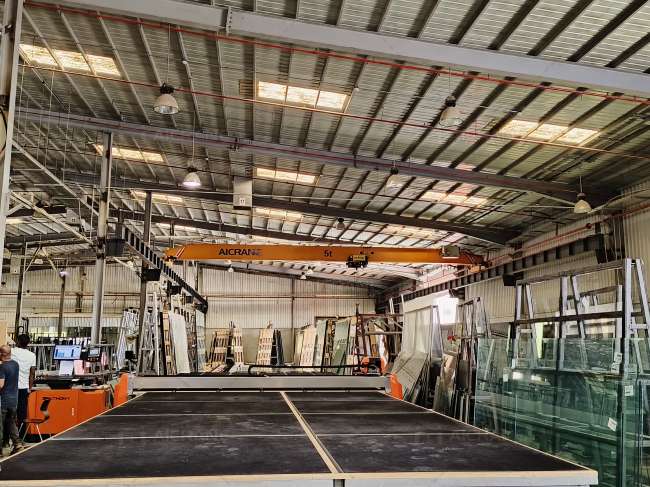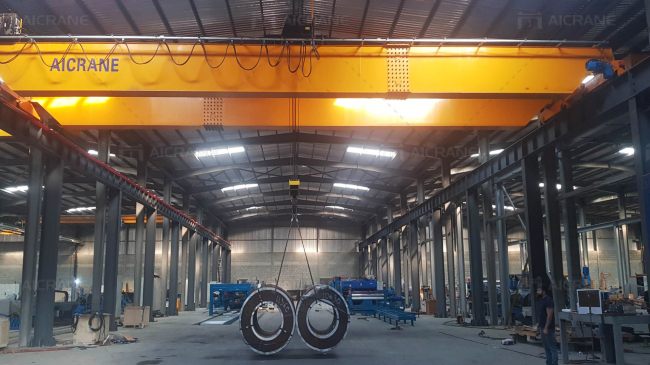In the rapidly evolving industrial landscape of the United Arab Emirates (UAE), the demand for efficient and reliable lifting equipment is growing. Overhead cranes are crucial in various sectors, including construction, manufacturing, logistics, and marine. Selecting the right overhead crane tailored to the specific needs of the UAE’s industrial environment requires careful consideration of several factors, including load capacity, environmental conditions, and operational requirements. This article outlines essential aspects to consider when choosing the best overhead crane UAE for your industrial needs.

Understanding the Types of Overhead Cranes
Before diving into specific requirements, it’s important to understand the different types of overhead cranes available. The most common types include:
- Single Girder Overhead Cranes: These are typically lighter and less expensive, ideal for lighter loads (up to about 10 tons) and smaller facilities. They offer efficient lifting capabilities in warehouses and light manufacturing plants.
- Double Girder Overhead Cranes: These cranes have two girders and are designed for heavier loads, often exceeding 10 tons. They provide increased lifting height and stability, making them suitable for manufacturing plants, large warehouses, and construction sites.
- Cantilever and Bridge Cranes: These are specialized cranes that can move along a rail, providing flexibility for lifting in different areas of a facility. They are often used in unique applications where traditional cranes may not be practical.
Understanding your specific industrial needs will help determine which type of overhead crane best fits your operations.
Load Capacity and Specifications
One of the most critical factors in selecting an overhead crane is its load capacity. For industries in the UAE that require heavy lifting—such as construction, oil and gas, or metal fabrication—a 50-ton double girder crane may be the best choice. It’s essential to evaluate the maximum load your crane will need to lift, including not only the weight of the loads but also any additional safety margins.
When calculating load capacity, consider:
- Regular Load Weight: The typical weight of the materials or products being lifted.
- Peak Load Weight: Occasional maximum weights that may be lifted during specific operations.
- Load Dynamics: The behavior of the load during lifting and movement, as this can affect the crane’s performance and safety.

Environmental Considerations
The UAE’s unique climate poses several challenges for industrial operations. High temperatures, humidity, and occasional sandstorms can affect crane performance and longevity. When selecting an overhead crane, consider:
- Material Selection: Choose cranes made from corrosion-resistant materials, such as galvanized steel or high-grade alloys, to withstand the harsh climate.
- Environmental Ratings: Ensure the crane is rated for use in specific environmental conditions, particularly if operating in extreme temperatures or potentially hazardous environments (like chemical plants).
Additionally, consider cranes with protective coatings and seals to protect sensitive components from dust and moisture. Want to know more about electric overhead cranes and choose a suitable one for your lifting needs? Just click here now https://aicranemachine.com/overhead-crane/eot-crane/.
Safety Features
Safety is paramount in any industrial environment, and choosing an overhead crane equipped with the latest safety features is essential. Key safety considerations include:
- Load Monitoring Systems: Systems that provide real-time feedback on load weight, preventing overload conditions.
- Emergency Stop Systems: Easily accessible emergency stops to halt operations in case of danger.
- Anti-Collision Systems: Sensors that prevent the crane from colliding with other equipment or structures during operation.
- Operator Training and Controls: Ensure that operators are well-trained in using the crane’s controls and emergency systems, as well as understanding load dynamics.
Customization and Automation
As industries in the UAE evolve, many are looking for more efficient and streamlined operations. Customizing your overhead crane with automation and advanced controls can significantly improve productivity. Features to consider include:
- Remote Control Options: Allow operators to control the crane from a safe distance, enhancing safety and flexibility.
- Automated Load Handling Systems: Implement systems that automatically position and secure loads, reducing manual handling and increasing efficiency.
- Integration with Warehouse Management Systems (WMS): Integrating the crane’s operation with WMS can enhance overall productivity by allowing real-time tracking of materials and loads.
Working with Reliable Suppliers
Choosing the right overhead crane for your industrial needs in the UAE is a significant investment. Therefore, it’s essential to partner with reputable suppliers, like Aicrane Company, that understand the specific challenges and requirements of the local market. Look for suppliers with a track record of providing quality equipment and excellent customer support, including installation and maintenance services.
In Summary
Selecting the best overhead crane for your industrial operations in the UAE involves careful consideration of load capacity, environmental conditions, safety features, and automation options. By understanding your specific needs and working with reliable suppliers, you can ensure that your investment in an overhead crane will enhance operational efficiency, safety, and productivity in your facility. As the UAE continues to grow as a major industrial hub, investing in the right lifting equipment will be key to staying competitive in this dynamic market.
